Literature Companion For Teachers
$42.96ISBN – 9781875622863
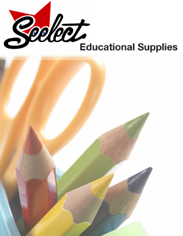 Study & Research Ages 11+
1 × $37.95
Study & Research Ages 11+
1 × $37.95  Learners Unlimited Book A
1 × $46.95
Learners Unlimited Book A
1 × $46.95  Instant Lessons - Food Technology Food Services and Catering
1 × $49.95
Instant Lessons - Food Technology Food Services and Catering
1 × $49.95 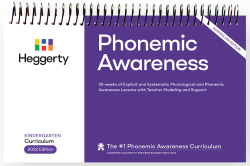 Phonemic Awareness - PURPLE Pre-school NEW Aust 2022 Edition
1 × $180.00
Phonemic Awareness - PURPLE Pre-school NEW Aust 2022 Edition
1 × $180.00 Subtotal: $314.85 (incl. tax)
Showing 21–40 of 66 results
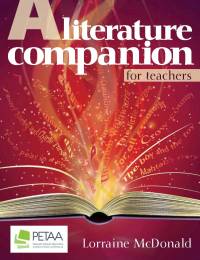

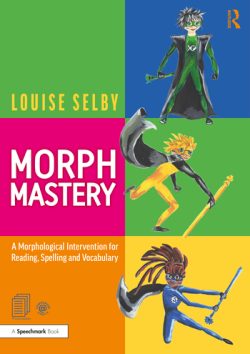
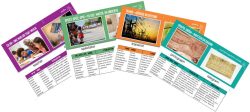
Appealing and informational morpheme reference cards for when teachers and students need a quick morpheme review or reminder. Post these in the classroom to support the Morpheme Magic lessons. These cards are built into many of the lesson activities, or can serve as a stand-alone for learning anytime during the day.
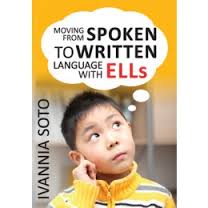
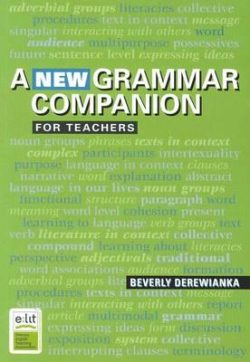

Where do words come from?–Learning new words by understanding their stories
The English language is made up of words from different places, events, and periods of time. Each of those words has an exciting story to tell us about where, when, how, and why they came about. Once Upon a Word is packed with easy-to-understand definitions and awesome word-origin stories. With this dictionary for kids, you can understand the history and meaning of English words, improve your vocabulary and spelling, and learn to play with language.
Explore how weird words like gnome, fun words like zombie, and common words like caterpillar came to exist. Discover why some words sound funnier than others (like cackle, sizzle, and twang) and why some groups of words start with the same few letters (like hydrate, hydrogen, and fire hydrant). In this dictionary for kids, there’s a whole world of English words to uncover
This unique dictionary for kids includes:
See how the English language evolved–from its beginnings to today–with this colorful dictionary for kids.


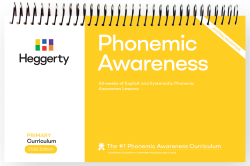
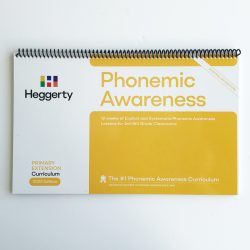
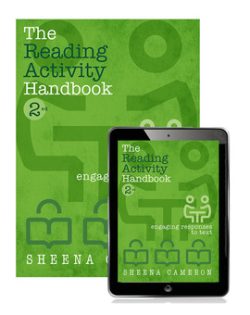
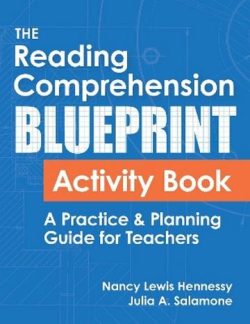
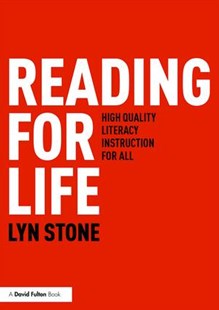
Why is it that more people can’t read and write? Why are there still so many vastly different methods of teaching literacy? Why do people still argue about it?
Reading for Life examines these three questions, addressing the less evidence supported ideas about teaching reading and writing which are still alive and well in schools all over the world. This accessible guide bridges the gap between research and practice, translating academic findings into practical suggestions and ready-to-use techniques. Written in an approachable style and with informative graphics, vignettes and interviews woven throughout, this book covers:
the components of literacy, including phonics, vocabulary and fluency
Reading for Life helps educational practitioners make informed decisions about which teaching methods to reject and select, and empowers parents to ask the right questions of professionals and policy makers. This book is a timely exploration of poor teaching methods and is an innovative, fresh assessment of how high quality literacy teaching can be provided for all.
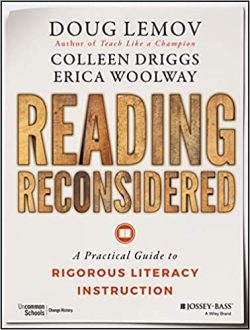
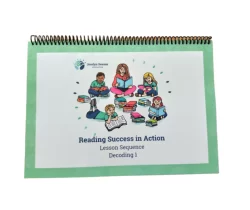
When making the shift to a systematic, explicit approach to teaching reading, it can be challenging to know how to arrange content in a way that supports the learning of every child in your class. The Reading Success in Action lesson sequence is designed to take the guess work out of making instructional decisions in teaching the basic code. Don’t spend hours agonizing over what, when and how to teach decoding. Follow the sequence and give your mental energy to supporting the students in your care.
– 86 pages of content
– Follows the Letters and Sounds sequence (s a t p i n m d g o c k ck e u r h b f l ff ll ss j v w x y z zz qu ch sh th ng)
– Easy to follow lesson plans contain instruction, teacher background knowledge, word lists and differentiated decodable sentences.

When making the shift to a systematic, explicit approach to teaching reading, it can be challenging to know how to arrange content in a way that supports the learning of every child in your class. The Reading Success in Action Lesson 2 sequence is designed to take the guess work out of making instructional decisions in teaching the first half of the complex code. Don’t spend hours agonizing over what, when and how to teach decoding. Follow the sequence and give your mental energy to supporting the students in your care.
Details:
– 75 pages of content
– Follows the sequence of ay, ee, igh, oa, oo (as in zoo), or, oy, ar, oo (look), er, ou, are, ow, oi, ir, a_e, i_e, o_e, u_e, ea, ai, ie, aw, ur, ear, le. The sequence has been chosen to reflect the most common grapheme representations as well as separating graphemes that represent the same phonemes. This conservative arrangement supports the cognitive load of students who are vulnerable to cognitive overload and confusion.
– Easy to follow lesson plans contain instructions, teacher background knowledge, word lists and differentiated decodable sentences. Three word lists and sentences enable you to reteach lessons as needed without repeating words. Lesson also contain recommendations of irregular high frequency words mapped to the decodable texts included in the sequence.
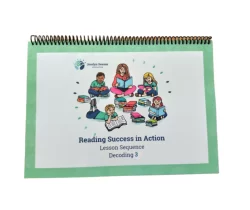
When making the shift to a systematic, explicit approach to teaching reading, it can be challenging to know how to arrange content in a way that supports the learning of every child in your class. The Reading Success in Action lesson sequence is designed to take the guess work out of making instructional decisions in teaching the basic code. Don’t spend hours agonizing over what, when and how to teach decoding. Follow the sequence and give your mental energy to supporting the students in your care.
Details of Reading Success in Action 3
– 27 teaching units covering alternate spellings of the phonemes of English with accompanying spelling/morphology detours for each unit.
– Easy to follow lesson plans contain instruction, teacher background knowledge, word lists and decodable sentences.
– Each ‘set’ has a page aligning decodable texts from different series (include free resources) with that place in the sequence so that you can have absolute confidence that your students won’t be led into the ‘guessing zone’ while reading.
– Instructions for teaching the lessons include QR codes with links to videos explaining each step of the process – pronouncing the sounds, preparing to teach, teaching phoneme/grapheme correspondence, teaching decoding and encoding (reading and spelling), teaching irregular high frequency words, using decodable texts.
– And an informal assessment and class tracking sheet to monitor progress
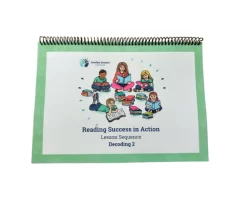
When making the shift to a systematic, explicit approach to teaching reading, it can be challenging to know how to arrange content in a way that supports the learning of every child in your class. The Reading Success in Action Lesson 2 sequence is designed to take the guess work out of making instructional decisions in teaching the first half of the complex code. Don’t spend hours agonizing over what, when and how to teach decoding. Follow the sequence and give your mental energy to supporting the students in your care.
Details:
– 75 pages of content
– Follows the sequence of ay, ee, igh, oa, oo (as in zoo), or, oy, ar, oo (look), er, ou, are, ow, oi, ir, a_e, i_e, o_e, u_e, ea, ai, ie, aw, ur, ear, le. The sequence has been chosen to reflect the most common grapheme representations as well as separating graphemes that represent the same phonemes. This conservative arrangement supports the cognitive load of students who are vulnerable to cognitive overload and confusion.
– Easy to follow lesson plans contain instructions, teacher background knowledge, word lists and differentiated decodable sentences. Three word lists and sentences enable you to reteach lessons as needed without repeating words. Lesson also contain recommendations of irregular high frequency words mapped to the decodable texts included in the sequence.
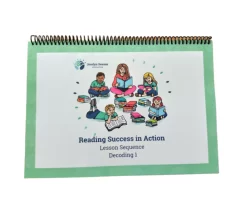
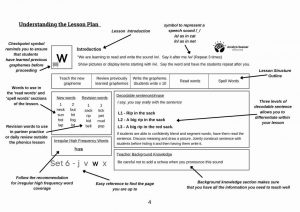
When making the shift to a systematic, explicit approach to teaching reading, it can be challenging to know how to arrange content in a way that supports the learning of every child in your class. The Reading Success in Action lesson sequence is designed to take the guess work out of making instructional decisions in teaching the basic code. Don’t spend hours agonizing over what, when and how to teach decoding. Follow the sequence and give your mental energy to supporting the students in your care.
Details:
– 86 pages of content
– Follows the Letters and Sounds sequence (s a t p i n m d g o c k ck e u r h b f l ff ll ss j v w x y z zz qu ch sh th ng)
– Easy to follow lesson plans contain instruction, teacher background knowledge, word lists and differentiated decodable sentences.